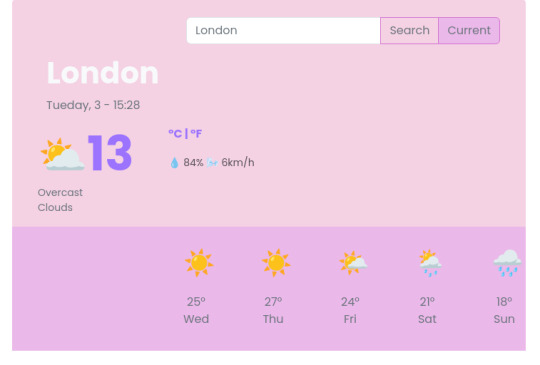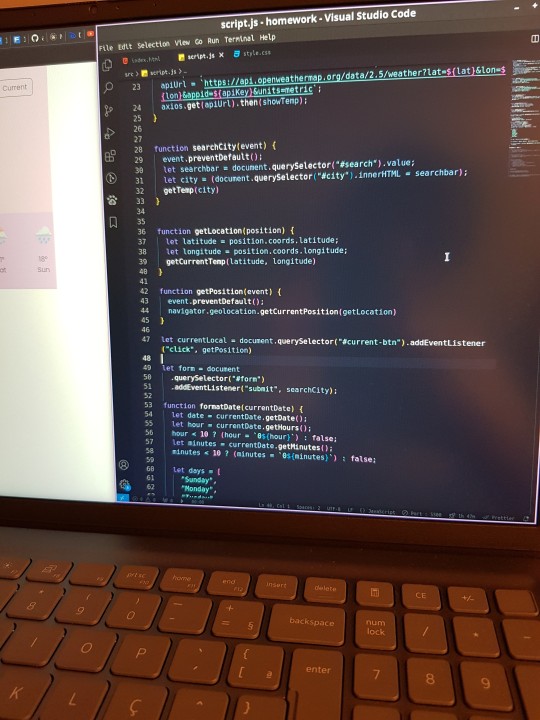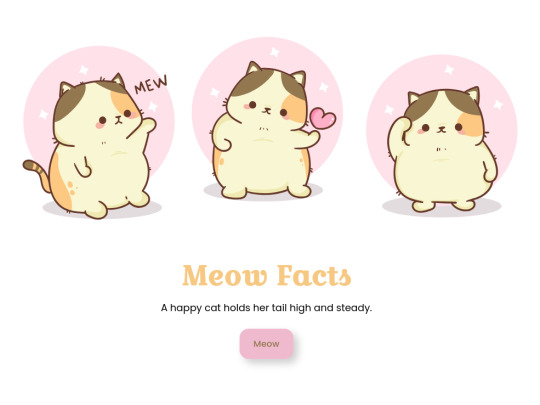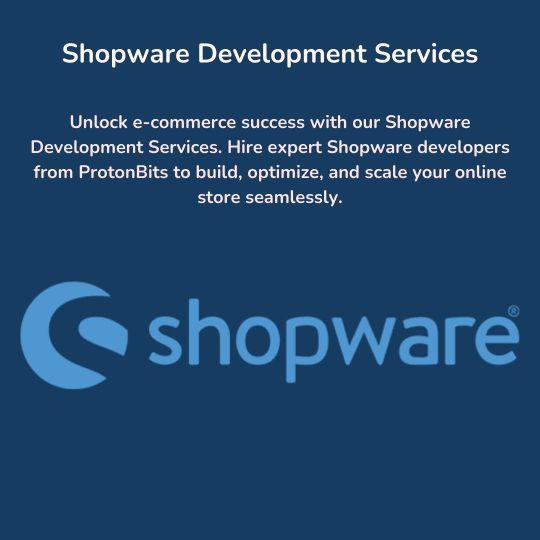#Developer-API
Explore tagged Tumblr posts
Text

The stupid- i mean silly 💚
#my art#original art#original character#oc#alien oc#api#artists on tumblr#I believe i might have oc brainrot guys…scary#im having lots of fun thinking about stuff for them!#I will try to make some short mini comics to develop that whole oc world where they are from more#slowly tho :P#(ohh btw he/they pronouns for this oc!)
169 notes
·
View notes
Text
Modern software development be like: I wrote 10 lines of code to call an API that calls another API, which calls yet another API that finally turns on a lightbulb. Pray that Cloudflare or AWS will not be down during this operation; otherwise, there will be no light for you.
119 notes
·
View notes
Text
Progress:
Okay so the authentication for spotify is hard for me to understand and requires user authentication, then making a token request that while expire in an hour. So i focused on what I did know how to do and what I had access to token wise. The Spotify developer home page has a temporary access token for demos. I took that token and made a function to make get request to the API and two functions for top tracks and top artists. Then made some functions to print them in my terminal. Here is what my end product looked like in the terminal.


The data for tracks is proving to just show a years worth of listening even though I specified long_term in my get request.
Here is my code:

I tried just doing track.artist but Spotify handles that as multiple artists so I had to handle them as such.
Next Steps: Tackling the user authentication and token requests and including it in this code.
(Also yes I know that is a concerning amount of My Chemical Romance tracks. I had my MCR phase strike up again with a passion last October and I am still balls deep in it.)
#coding#baby coder#web developers#spotify api#software engineering#web development#javascript#nodejs#node-fetch#terminal app#visual studio code#vs code#backend#frontend#my chemical romance#the weakerthans#u2#modern baseball#pup the band#oasis#wilco#misfits#descendents#programmer#programming#github#developers
11 notes
·
View notes
Text
Explore the innovative software development services offered by Software Development Hub (SDH). From MVP development and AI-powered solutions to ERP software, IoT, and cloud migration, SDH delivers cutting-edge expertise for startups and businesses worldwide. Discover insights, project highlights, and tips on building user-centric applications and driving digital transformation.
#software development#web app development#mobile app development#artificial intelligence#saas development company#custom app development#product development#erp software#enterprise software#python#machine learning development#IoT and IIoT development#machine learning#api development
8 notes
·
View notes
Text
REST APIs
REST (Representational State Transfer) is a type of API where all the information needed to perform an action is passed to the API at the time the request needs fulfilling. The server does not need previous knowledge of the clients session in order to fulfill their request.
The alternative to this is that the client having a 'session' with the server, where the server keeps information on the client while it's active, which can take up a lot of server processing power and memory. For large services handling possible hundreds of thousands of clients at a time, keeping a 'connection' can take up a lot of server processing and memory.
REST speeds up processing time for both the server and client. With sessions, they can end up split over multiple servers, meaning servers have to communicate to get data which can slow down response time. Because the server needs no prior knowledge of a client, any client can handle any client's request easily, which also makes load balancing easier, a request can be sent to any server that can handle it which is currently the least busy.
All REST APIs use HTTP methods. A client sends a request via HTTP to a specific endpoint (location on the web), along with all of the information needed to complete that request. The server will then process it and send back a response.
Core features of REST:
Client-Server Architecture - a client that sends requests to a server, or set of servers via HTTP methods.
Stateless - client information is not stored between requests and each request is handled as separate and unconnected.
Cacheability - data that is expected to be accessed often can be cached (saved for a set amount of time) on the client or server side to make client and server interactions quicker.
Uniform interface - no matter where an endpoint is accessed from, its requests have a standard format. Information returned to a client should have enough information and self description that the client knows how to process it.
Layered system architecture - calls and responses can go through multiple intermediate layers, but both the client and server will assume they're communicating directly.
Code on demand (optional) - the server can send executable code to the client when requested to extend client functionality.
5 notes
·
View notes
Text
Introduction to APIs and Web APIs
The illustration above is the best way you can think of how APIs work and I talk more about it in my new article about APIs. I really love the concept and logic of APIs, it proves that collaboration is a huge part of programming and APIs solidify that. I hope you enjoy the read and also this is my first article and I intend to write more about technologies that interest me and maybe tips and tricks in the future.
111 notes
·
View notes
Text




03/10/23
i finished shecodes week 5 homework, and now the app we're building has real-time temperature, as well as description of temperature, humidity and wind! you can search the city or you can get temperature of your current location!! this is really cool!
learning about api has being really exciting, so i made a simple page using meow-facts api where you click meow to get facts about cats, you can check the repository and the live page!
really excited to learn more about api!
ps: this sakura chocolate is the cutest thing! i almost didn't eat it 🥺
49 notes
·
View notes
Text
Results of this Week's Mangolei Co-Working Session 🥭
I completed a feature that lets you break out of choice menus by pointing out rhetorical fallacies!
Mango drew sprite sketches for a female love interest!
Blini made a rough mockup teaser trailer
Firn rewrote parts of the skript
daschoe continues to work the UI into our prototype
Trmin successfully tested Twitch polls! Viewers will be able to vote on choices once that feature is finished :D

#VNDev#GameDev#IndieDev#visual novel development#we plan to do a lot more with the twitch api btw#please look forward to it :)
3 notes
·
View notes
Text
💢
y'know, sometimes i wonder if i was born with a dick, i MIGHT be listened to for a change in work 👍
#ooc#frustrated 😠#tldr changes are being made and when i asked could i test them#i basically got told no. that they're going into our develop ('main') code branch as is#so fuck it if it breaks our api middleware i don't wanna fucking hear about it
3 notes
·
View notes
Text
Woxro: The Bright Head in the Lead of Ecommerce Development
Woxro is one of the highest level e-commerce development companies in the constantly changing digital economy. Woxro assures cutting-edge solutions for businesses with the sophisticated requirement of today's digital economy. Whether it's about B2B and B2C platforms or the most seamless integration, or simply a custom-built solution, the online business experiences get ignited through Woxro's services. Backed with the attitude of innovation and commitment towards making their clients successful, Woxro helps companies make strong digital platforms along with competitive markets. Check out these are the core e-commerce development services by which Woxro comes forward to be a preferred partner for businesses wanting to breathe new life into their online presence. Woxro is the leading ecommerce development company in India and is providing top notch services and solutions for you.

B2B Platform Development
The B2B interaction is at the heart of modern commerce; it has built B2B platforms that make such interactions easy and hassle-free. B2B marketplaces help a company reach its suppliers, shortlist potential partnerships, and make the transactions all from one centralized place. Woxro's B2B platforms are wide-ranging and ensure that customers experience security, reliability, and ease of use in all business operations in order to create confidence and efficient workflows. Woxro's B2B solutions are equipped with real-time inventory management, automated processes, and advanced analytics, meaning businesses can work efficiently and have valuable relationships that last long.
B2C Platform Development
Through ease-of-use, online shops to offer products for shopping, Woxro's B2C platform development services help businesses reach their customers and interact directly with them. Designed to convert visitors into loyal customers, Woxro's B2C platforms include all the comprehensive tools for managing products, processing secure payments, and engaging in more personalized experiences for shopping. Each is optimized to give an easy, enjoyable experience to the user as businesses stretch their reach to the customer, marketing being directed, and giving an enjoyable shopping experience that creates a sale and brand loyalty.

Platform Migration
Moving out from the outdated systems to modern scalable platforms often marks the beginning for businesses that want to remain competitive. Woxro professionals successfully migrate complexly numerous business operations from less than the minimum level of disruption. Woxro takes cautious control of data migration, system configuration, and testing processes while making the move to become more distant in terms of on-premise systems to cloud infrastructure, updating legacy technology, or changing platforms. When businesses engage with Woxro, they embrace the latest technologies, realize cost savings on operations, and boost the performance of the system with business continuity and efficiency intact.
Custom-Designed Platform Development
Woxro realises that every business is unique and has custom platform development services that provide bespoke solutions for a specific goal or workflow in place. These platforms are off-the-shelf by definition, designed from the ground up to meet a precise business need. Woxro's custom solutions are scalable and adaptive, allowing businesses to implement proprietary features, streamline workflows, and maximize flexibility. About Woxro's customization innovation integration: It ensures that the platforms continue to grow with the business and, thus, become an excellent basis for long-term growth as well as a competitive edge in the market.
CMS Integration
The integration of a content management system with your e-commerce platform has vast benefits within the operation, ranging from effective product management to advanced SEO capabilities. Woxro's content management system integration services enable businesses to access a single, easy-to-use interface for managing product descriptions, optimizing search content for better search engine rankings, and personalising shopping experiences. CMS integration, therefore, promotes ease of updates while bringing increased online visibility and engagement from customers. CMS integration helps companies create more engaging and dynamic experiences that talk to customers to convert them.
API Integration
API integration is a necessary concept for e-commerce platforms in an interlinked digital world, integrating with third-party applications, payment systems, and other services. Woxro's API integration services provide smoother interoperability between different software applications for easy information sharing and add-on features. Of course, payment gateway, CRM system, and APIs all resolve issues because their performance can grow without getting disconcerting of existing operations, Woxro ensures that. API integration makes the overall functionality and responsiveness of e-commerce platforms robust, flexible, and scalable enough to expand on further expectations.
Why Woxro for ECommerce Development?
At Woxro, you will find industry expertise, innovative technology and, above all, a client-centric approach that seeks tailored solutions for each business. Ecommerce development with Woxro's services is done to cater for the unique needs of every client so as to ensure robust, scalable solutions adapting to changing market demands. Whether it is a B2B, B2C platform, handling platform migrations, or integration with CMS and APIs, Woxro connects with technical pools of expertise in alignment with strategic insight to yield results. Businesses partner with Woxro to achieve advanced tools and custom solutions in enforcing the new path forward through their digital success.

Conclusion
Woxro e-commerce development solutions give businesses the possibility of a powerful and agile web presence. The products offered by Woxro for creating B2C growth strengthen customer engagement, streamline B2B relations, smooth migrates, and unlock API and CMS integrations that facilitate business clients' digital transformation with the platform. Equipping businesses with solutions that solve the challenges of the digital age, creating future-proof, impact-generating e-commerce, to drive business growth and success-all of these Woxro does.
#ecommerce#ecommerce development agency#ecommerce development services#ecommerce development company#ecommerce website development#ecommerce developers#web developers#web development#web graphics#web resources#shopify#woocommerce#online store#smallbusiness#websitedevelopmentcompany#search engine optimization#web design#website design#web hosting#website#social media#content creation#content creator#cms development services#cms#b2b#b2bmarketing#api integration
5 notes
·
View notes
Text
making this blog to document the creation (and hopefully improvement) of a welcome to night vale api since, what the hell, no one else has, it's been a few years since i ran a wtnv blog, and i need a fun project to look at that's not work. open to suggestions for features/site design <3
#welcome to night vale#wtnv#night vale presents#welcome to night vale api#api#software development#coding
6 notes
·
View notes
Text
First Steps:
So I want to learn how to get access to the spotify api and my data first in my terminal. So I want to:
Get my top albums in terminal
Get my top artists in terminal
Get my top songs in terminal
If I figure it out really quick:
Add that json data into an xbar project on my Macbook
If that is easy then I'll add more stuff for when you click on xbar
#programmer#software engineering#software#code#coding#codeblr#website development#web developers#web design#baby coder#I know how to do nothing I just learned how to access APIs and make crude Ruby on Rails apps#ruby on rails#ruby
7 notes
·
View notes
Text
#best it consulting companies#It companies near me#Software Company in Durg Bhilai Chhattisgarh#ui & ux designer & developer#Digital marketing companies near me#Top digital marketing companies Durg#Third party api integration Services in durg#API development and integration#Mobile application development Services#Mobile software development company Durg#Web development company Bhilai#Best website development company Durg
2 notes
·
View notes
Text
Expert Shopware Development Services | Hire Professional Shopware Developers
Unlock your e-commerce potential with our specialized Shopware Development Services. At ProtonBits, we provide expert Shopware developers who are dedicated to building, optimizing, and scaling your online store seamlessly. With our tailored solutions, you can ensure a smooth and efficient experience that drives growth and success for your business.

#shopware#shopware development#shopware plugin#shopware api#shopware cms#shopware ecommerce#shopware development company#shopware developers#shopware development services#shopware integration services#shopware software#shopware plugins#shopware hosting#shopware e-commerce#shopware integrations#shopware development agency#shopware developer#hire shopware developer#hire shopware developers#shopware mobile app
3 notes
·
View notes
Text
not to sound like a redditor again but holy fuck it’s actually so annoying to be smarter than most people and it creates actual problems in my life. I have to be so careful about anything I say because even if it’s correct, people my level and above me will feel like I am making them look bad or challenging their authority so every fucking thing I say has to be this careful construction of explaining the same thing over and over again until I can finally lead them to the right answer so they don’t feel like I’m smarter than them.
#like I gave some VERY basic background on how APIs work to make my answer of ‘since the SME isn’t here you really need to talk to the#developer’ make sense#and 5 very very frustrating ‘well can they just do this?’ ‘yeah if they can target that endpoint’ ‘well can they target that end point?’#���I don’t know and it’s not documented so you’ll have to ask [developer]’ ‘oh okay but what about this?’#and then repeat that 5 times but each time the field suggestion is different#but she’s technically my boss so I can’t even say ‘this is why I said you’d need to ask [developer] I do not have the answer you need’ bc#bc the last time I did that I got yelled at.#it’s even worse with my male superiors and like#I don’t know if I’m actually just smarter than everyone or if I’m just like super autistic or something????#it’s such a stupid thing to complain about too and it sounds so arrogant and self centered#but also like. that is my experience…#but also I can’t imagine that I’m actually meaningfully smarter than 3/4 of the people I meet????????#like am I just unlucky?????
4 notes
·
View notes
Text
Project update
In June, when I started the jolt-jni open-source software project, I considered it a subsidiary project. However, it proved so absorbing that it soon soaked up most of my attention, leaving little for all my other projects.
This is surprising, since unlike most of my projects, it has no graphical component (yet) meaning no satisfying CGI images to enjoy (and perhaps share on social media).
Also unlike most of my projects, I was coding it from scratch, yet constrained by a preexisting API. In practice, that meant writing a ton of boring boilerplate. Prior to this I'd been scornful of the idea of using AI to generate code. But for generating boilerplate code, I can see that mechanical aids have their place.
Now that the library is about 80% complete, I've turned more of my attention to testing. My progress (measured in lines of code) is much slower. Some days I delete more code than I add. The good news is, I enjoy troubleshooting far more than coding.
For the record, here are the current statistics:
+ 1472 commits
+ Overall 48K lines of code (excluding comments and blanks)
+ 29K lines of Java (including 8K lines of tests and examples)
+ 17K lines of C++
#open source#software development#coding#java#c++#troubleshooting#api#current project#library#generative ai
2 notes
·
View notes